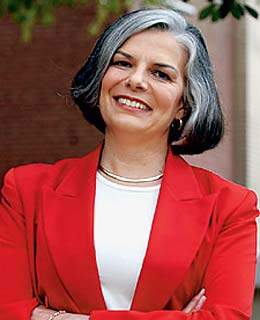
It was in the basement of her family's rural South Dakota home that Julie Gerberding created her first laboratory, studied the life cycle of bugs and planted the roots of her public-health career. As the first female director of the Centers for Disease Control and Prevention (CDC), she helms an agency that is the nation's front line of defense against invasions from the world of microbes both natural and, with the threat of bioterrorism, increasingly man-made.
A careful, soft-spoken physician, Gerberding first drew attention for her honest, concise handling of the anthrax attacks in 2001. Since getting the top CDC post a year later, she has spearheaded the creation of the Emergency Response Center, a high-tech war room that allows the CDC to link to and share information with scientists from around the world. "We are redefining CDC as the nation's health-protection agency," says Gerberding. That means being ready for a terrorist attack with smallpox, preparing for the next influenza pandemic and battling the growing obesity epidemic among America's young all at the same time.
It also means being able to think globally. During the SARS crisis, for example, the CDC became part of a pioneering virtual lab in which researchers from different continents collaborated via computer to detect, identify and analyze the agent responsible for SARS in record time. Such openness to collaboration is a hallmark of Gerberding's style and will remain the key to how the CDC handles future crises.
From the Archive
Congress evacuates as new anthrax cases stress the system and our nerves